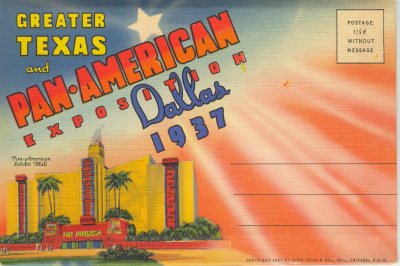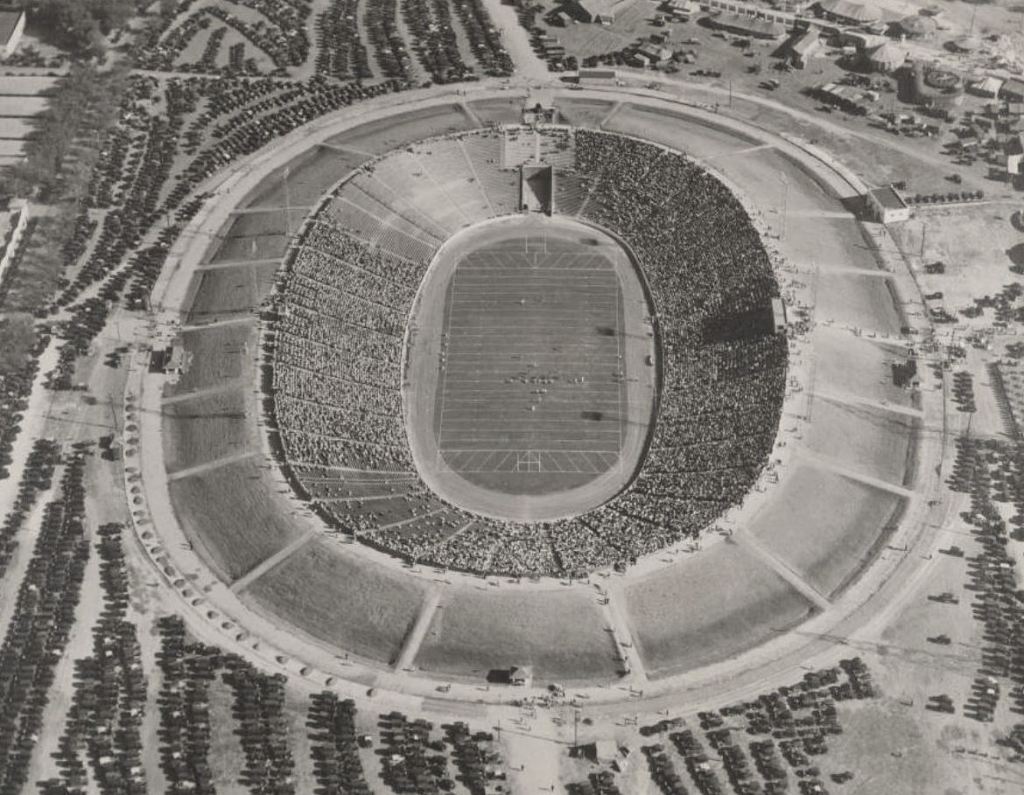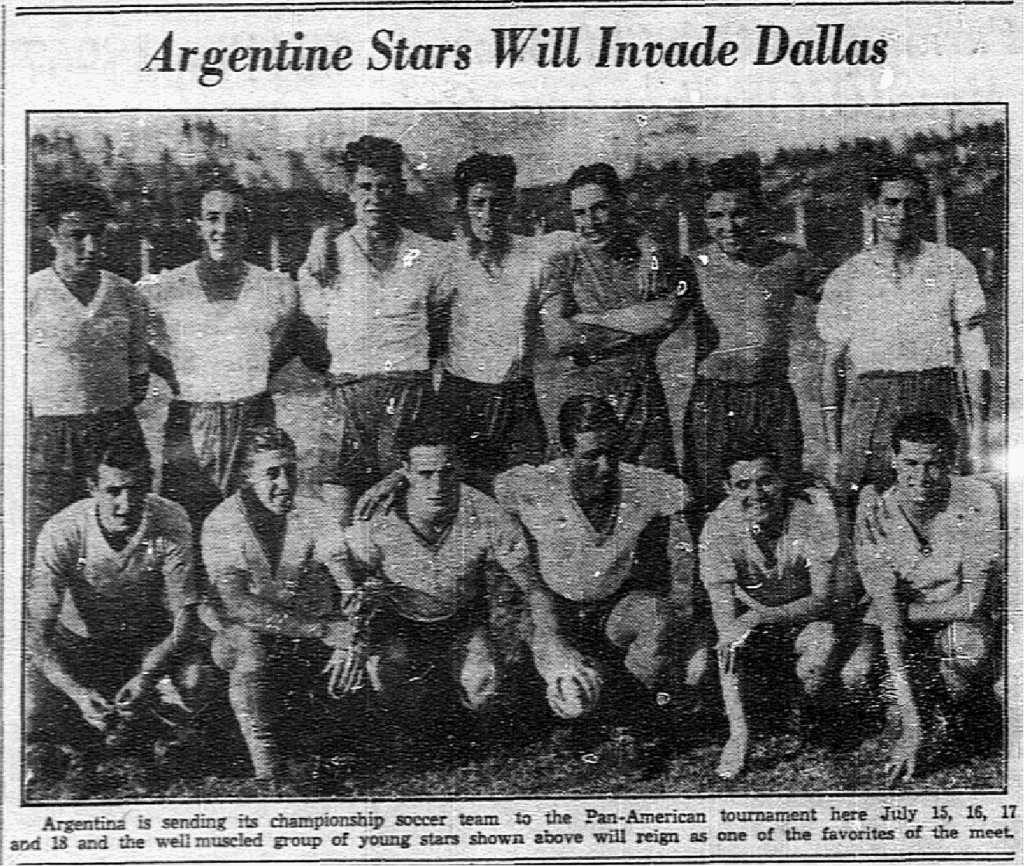
Texas has a recent history of hosting a variety of international soccer events. For example:
- CONCACAF, the North, Central and Caribbean federation for the global soccer governing body (FIFA), has played numerous Gold Cup matches in the state dating back to 1993 when Dallas hosted group stage and semifinal matches at the Cotton Bowl. Most recently, virtually all of the 2021 Gold Cup, including a semifinal match in Austin, was played in 3 different Texas cities.
- Three matches in the 2016 joint CONMEBOL/CONCACAF Copa America Centenario tournament, including a semifinal, were played in Houston.
- The first Manchester Derby held outside of England was a preseason match in 2017 between United and City in Houston’s NRG Stadium.
- The Mexican Men’s National Team and numerous Mexican club soccer sides have played games in Texas for decades. Mexico even played “Away” World Cup qualifiers in Houston against Belize and Guyana in 2008 and 2012, respectively.
However, the most prominent international soccer event held in Texas was the six matches of the 1994 FIFA World Cup played at the Dallas Cotton Bowl in 1994. Over 350,000 spectators braved the midday heat in Dallas in late June and early July to witness the Texas portion of the tournament. It was an introduction to soccer for many of the attendees, since there was no high-level professional team or league in North Texas after the NASL Tornado folded eleven years earlier. I have spoken to several people who vividly remember attending matches at that World Cup.
In 1937 Dallas Was the Site of the Second International Soccer Tournament in the United States
What may surprise many, however, is that the first international soccer tournament played at the Cotton Bowl was a little known tournament held in conjunction with the 1937 Greater Texas & Pan-American Exposition at Dallas Fair Park.
To the best of my knowledge, the first international tournament in the United States was the 1904 Olympics in St. Louis. Since the 1934 Los Angeles Olympics did not include soccer, the 1937 Dallas Exposition championship, unofficial as it was, would have been the second international soccer tournament played by country representatives in the United States.
Since there was little soccer culture or activity for decades in the state, Dallas was a strange place for this event in 1937.
Statewide soccer “championships,” contested by local club teams from the DFW and Houston regions, and San Antonio, did not occur before 1930. In a preview article about the 1937 Exposition soccer tournament, a national writer wrote, “Soccer is virtually an unknown sport in the Southwest.” I believe that is an understatement. Soccer was an underground sport in Texas at the time. Most games were played at local parks, primarily by immigrants from soccer-playing countries.
The 1936 Texas Centennial Laid the Groundwork for The Greater Texas & Pan American Exposition

But money certainly can make a lot of strange things happen. The previous year, Texas held the Centennial of its founding at Fair Park, located just southeast of downtown Dallas. The event was a massive success, with over 6 million people visiting over the course of the exhibition.
Seeing another potential gold mine, local businesspeople decided to use the infrastructure in place at Fair Park and financially back another exposition the following summer.

Original Plans for a Large Soccer Tournament Failed to Materialize
Thus the 1937 Greater Texas-Pan American Exposition was born. The organizers decided to hold “Olympics” in conjunction with the Exposition, primarily to help promote the fair and increase attendance. In addition to soccer, the general Exposition included various athletic competitions, the most significant of which was the Track and Field events. Many of the top US track and field athletes of the day came to Dallas to participate.
The soccer competition was scheduled from July 15-18 at the Cotton Bowl at Fair Park. Event organizers scattered far and wide through Latin America to make personal pitches for all countries to send delegations, exhibit at the event, and organize a group of athletes to come to Dallas. To further encourage participation, a budget of $50.000 was set aside to pay for travel and living expenses for the athletes.
The first official invitations were extended in late March, less than 90-days before the Pan American Olympics were supposed to begin. Argentina, Uruguay, Peru, Brazil, Cuba, and Mexico accepted invitations to send soccer teams at one point or another.
However, when the time came to travel to Dallas, Argentina was the only country to send a team. Peru could not arrange ocean transportation with such short notice, but precisely what happened to the other countries, especially Mexico, is unclear. One article in the Dallas Morning News mentioned that government officials wanted to travel to Dallas to monitor the contentious potential issues they predicted would occur among the competing South American teams. I can speculate that the generosity of the tournament organizers only went so far, and initial interest waned when free vacations for hangers-on weren’t on the table.

Canada Joined the Tournament as a Late Addition
Left with only two teams a week before the tournament, organizers frantically looked to Canada. They were not formally part of the Pan American Union and were not invited to participate in the Exposition previously. A hasty invitation was extended, and Canada found a third team that agreed to join on short notice.
The US Soccer Football Federation selected the Highlanders from Trenton, New Jersey to represent our country. The Highlanders were the reigning National Amateur Cup Champions.
The Canadian Soccer Federation offered Manitoba first crack at providing a team, and they selected the provincial champions, the Irish Soccer Club from Winnipeg, to represent Canada. The Irish, who also included a handful of players from other clubs in Winnipeg, were selected after the Exposition organizers asked the Secretary-General of the Canadian Soccer Association, then known as the Dominion of Canada Football Association, to provide a team for the tournament from Winnipeg, Montreal or Toronto.

Argentina Sent a Young Team of Amateurs who were not the Country’s National Team
The description of the traveling Argentinian’s as a “championship soccer team” was hyperbole, likely for public relations purposes. A hastily assembled group of young players from clubs in Buenos Aires, primarily amateurs called the Dallas Fourth Division, came from the first Under-23 combine in Argentina. The world-class full national team had no intention of attending the Pan American tournament. A second tier of professional players was committed to another tournament in Columbia later that summer, so the youthful roster of unproven players headed off to Dallas.
The Argentina team took 18 days to get to Dallas via ocean liner and train. They ended up staying in the city for close to a month. Once they arrived, they captivated many local sports enthusiasts who witnessed their practices at Southern Methodist University, where they were staying.

Argentina Dazzled and Dominated in the Three Matches Played
Two hundred athletes from nine Western Hemisphere nations marched in the opening ceremony on Thursday, July 15th. In attendance at the opening ceremony were dignitaries such as the United States Assistant Secretary of War, Governor of Texas, and Brazilian Ambassador to the United States.
Once the games started, it became clear that a collection of young Argentinians, all of whom were under 20, were light-years better than the US and Canadian representatives.
Argentina opened the tournament with a 9-1 win over the United States. The AP reporter covering the match, which approximately 10,000 spectators witnessed, summarized the game with this description. “Short skillful passing and marvelous heading by the Argentinian eleven outclassed the long passing game attempted by the Americans.” He also described futile efforts by Highlanders players to take the ball away from one of the Argentinian players who “toyed” with them by lightly using “magic footwork” to tap the ball with both feet past two or three Highlanders to the cheers of the crowd. Substitute Jack Carlton scored the only Highlanders goal with 10 minutes to play.
The next day, the Highlanders lost to Canada 3-2. In the final match, the Canadians lost to Argentina 8-1.
Since the Argentinians had time to kill while waiting for return transportation, they received permission to play an exhibition against a quickly assembled collection of local amateurs, called the Texas-Mexican All-Stars. Though the All-Stars coach talked big, saying, “if the Argentinians can’t get the ball, they can’t score, can they?” the result was as expected. Argentina scored in the first minute and won 13-0, delighting the crowd of approximately 5,000 with their technical wizardry, when they essentially played keep away from the locals for the final 15 minutes. The game report described the “remarkable exhibition” as crisscross passing and aerial balls. The reports also mentioned that the All-Stars managed to cross the midline only three or four times and described their efforts as “helpless.” The lone All-Star mentioned was right back Ellington, whose “clever maneuvers stalled off more than a half a dozen Argentine net bound shots.”

After the Texas-Mexican All-Stars exhibition game, Argentina returned home with two trophies, the Pan American and a trophy presented by the Dallas Mexican counsel general.

Multiple Argentinians Made an Impact, but One Forward Stole the Show at the Tournament
Argentina Center Forward Angel LaFerrara was the star throughout the three matches, scoring 13 goals….including 5 in each game against the Highlanders and All-Stars. He ended up playing six times for the full national team in his career, one of few players from this roster who had this honor.
The complete domination by this amateur side does make me curious how rough it would have been for the US and Canadian sides had they faced the full Argentina National Team instead.
Interestingly, the US National team played their only three matches between 1936 and 1947 a couple of months later in Mexico, where they were embarrassed. This tournament would have been excellent preparation for those matches, but the US Federation sent the Highlanders instead.
The Dallas Exposition is Considered to be an Unofficial Forerunner to the Pan American Games

A couple of other notes. Many recognize these Olympics as an unofficial beginning of the Pan American games that continue every four years to this day, the next in Santiago, Chile in 2023. Brazil announced while in Dallas in 1937 that they intended to make these sporting games an annual event and offered to host it the following year in Rio de Janeiro. Because of WWII, the first Pan Am games did not take place until 1951 in Buenos Aires.
The other result of this tournament was the formation of a small junior soccer league in Dallas later that year. The initial enthusiasm generated, mainly by the Argentinians dazzling performance, didn’t last more than a few years. When the Dallas Tornado became the first professional team in the Metroplex to play in a national soccer league in 1967, they found a virtually non-existent youth soccer landscape.
Additional Texas International Soccer Events are on the Horizon
With CONCACAF qualifying for the 2022 World Cup starting up this week, Texas will soon set one new international soccer milestone when Austin hosts the first-ever World Cup qualifier played in Texas in October. The 2026 World Cup and whatever form the Confederations Cup takes in 2025 will likely present additional opportunities for Texas to host international soccer tournaments in Dallas and Houston also.
Soccer may have been “virtually unknown” in Texas when the first tournament in the state happened in 1937, but that is certainly not the case anymore.
I would like to express my appreciation to a colleague, Federico De Michelis from Houston, who provided assistance in researching the Argentina team sent to the Exposition in Dallas.
